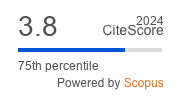Article | Open Access
Public Design of Urban Sprawl: Governments and the Extension of the Urban Fabric in Flanders and the Netherlands
| Views: | 4533 | | | Downloads: | 2492 |
Abstract: Urban sprawl is often portrayed as a (quasi-)natural process, as inevitable and taking place behind our backs. However, we claim that it is co-produced by government: Governments not only allow sprawl to happen, but often also incentivise and stimulate it, either knowingly or unintentionally. We substantiate this claim by comparing urban development and government institutions in Flanders (Belgium) to the Netherlands, two neighbouring territories, yet very different regarding this matter. Urban development in the Netherlands is considered orderly and compact, whereas in Flanders it is considered haphazard and sprawled. Urban planning, too, could not be more different. Strong national planning and an active local land policy characterise Dutch planning, while the opposite applies to Flanders. Although these images seem largely accurate, we argue that it is very particular government institutions in both countries that (help) create and reproduce the various degrees of urban sprawl.
Keywords: discourses; Flanders; government institutions; land-use planning; public design; the Netherlands; urban development; urban fabric; urban sprawl
Supplementary Files:
Published:
© Edwin Buitelaar, Hans Leinfelder. This is an open access article distributed under the terms of the Creative Commons Attribution 4.0 license (http://creativecommons.org/licenses/by/4.0), which permits any use, distribution, and reproduction of the work without further permission provided the original author(s) and source are credited.


